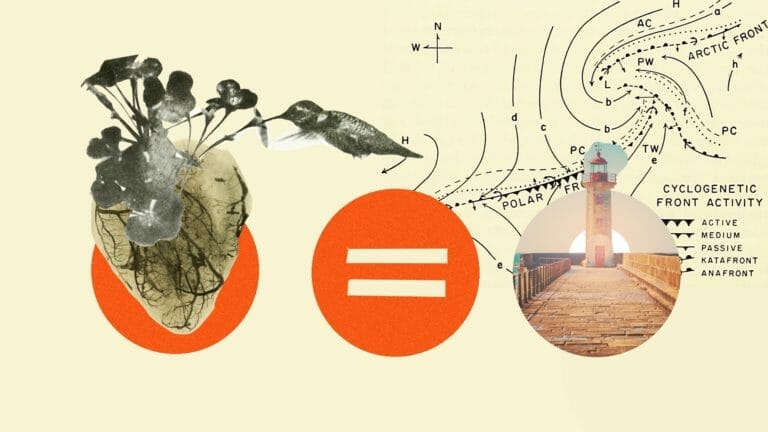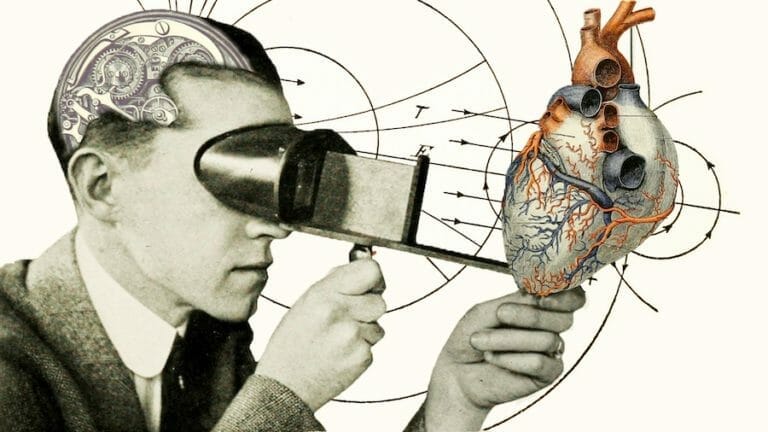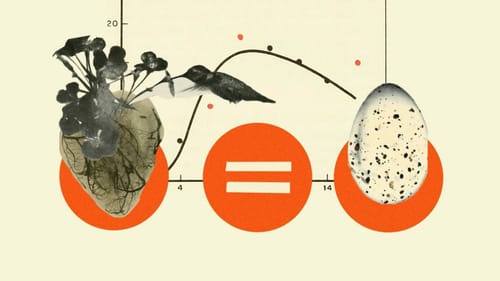The soul drives the blood and the blood moves the heart
The heart is the central organ of the blood circulation. It is a fist-sized hollow muscular organ resembling a rounded cone with the tip pointing downward and to the left front, slightly offset to the left side of the body behind the sternum. Only in the relatively rare case of right-heart disease is it more offset to the right side of the body, usually with an overall mirror-inverted organ arrangement (situs inversus). In the macrocosm the heart corresponds to the sun as the planetary metal to gold.

The heart as a future voluntary organ
The heart consists mainly of striated muscles, similar to our skeletal muscles, which we can operate arbitrarily. According to Rudolf Steiner, this already announces the future development through which the heart will one day become an arbitrary organ:
“It is the organ that is intimately connected with the blood circulation. Now science believes that the heart is a kind of pump. This is a grotesque fantastic idea. Never has occultism made such a fantastic assertion as today’s materialism. That which is the moving force of the blood is the feelings of the soul. The soul drives the blood, and the heart moves because it is driven by the blood. So exactly the reverse is true of what materialistic science says. Only today man cannot direct his heart arbitrarily; when he is afraid, it beats faster, because the feeling acts on the blood and this accelerates the movement of the heart. But what the human being suffers involuntarily today, he will be able to control later on at a higher stage of development. Later on, he will drive his blood and move his heart as he does the muscles of his hands today. The heart with its peculiar construction is a crux for today’s science. It possesses transversely striated muscle fibers which are otherwise found only involuntary muscles. Why? Because the heart today has not yet reached the end of its development, but is an organ of the future, because it will become an arbitrary muscle. Therefore, it already shows the disposition for this in its construction.
Thus everything that goes on in the soul of man changes the construction of the human organism.” (Lit.:GA 99, p. 147f)

Heart and blood circulation
Anatomy of the human blood circulatory system.
– Capillary system in the head
– Pulmonary artery
– Right atrium
– Right ventricle
– Body vein
– Pulmonary capillaries
– Septum
– Capillary system in the body
– Pulmonary vein(s)
– Left atrium
– Left ventricle
– Body artery
The heart is not a pump
From the flowing blood circulation, the heart begins to form from the 3rd week of embryonic development and starts to pulsate independently from the 23rd or 24th day of pregnancy. According to Steiner, the shape of the heart is a result of the accumulating currents of forces from left-right or right-left and from above and below. The backwater of these currents creates thickenings from which the four chambers of the heart are formed. But not only the shape, but also the activity of the heart is, according to Steiner, a result of the living movement of the blood circulation. In his view, the heart does not function as a pump that drives the blood through the body, but rather the blood circulation sets the heart in motion. The left half of the heart receives the oxygen-rich blood from the small pulmonary circulation; the right half of the heart receives the oxygen-poor blood from the large body circulation.

**Cardiac output** (**CO**), also called **cardiac output per minute** (**CO/min**), is about 4.5-5 l/min in healthy adults; it can increase to more than 30 l/min under high stress, especially in elite athletes.
“This heart has made the mechanical-materialistic view a pump which drives the blood through the human body. It is the opposite, this heart: A living thing is the blood circulation – embryology can prove it exactly, if it only wants – , and the heart is put into activity by the internally moved blood. The heart is the one in which the activity of the blood is finally manifested, in which the activity of the blood is taken into the whole human individuality. The activity of the heart is a consequence of the blood activity, not the blood activity a consequence of the heart activity.” (Lit.:GA 74, p. 92f)
“If one learns to recognize the rhythmic system as it is expressed in the course of respiration and blood circulation, one breaks with the superstition that the heart is a pump which drives the blood through the organism like some body of water. Then one learns to recognize that the spiritual intervenes in the blood circulation, that therefore the rhythm takes hold of the metabolism, causes the blood circulation and then in the course of the human development, already in the embryonic development, the heart is plasticized out of what is the blood circulation, so that the heart is formed out of the blood circulation, thus out of the spiritual.” (Lit.:GA 203, p. 151f)
